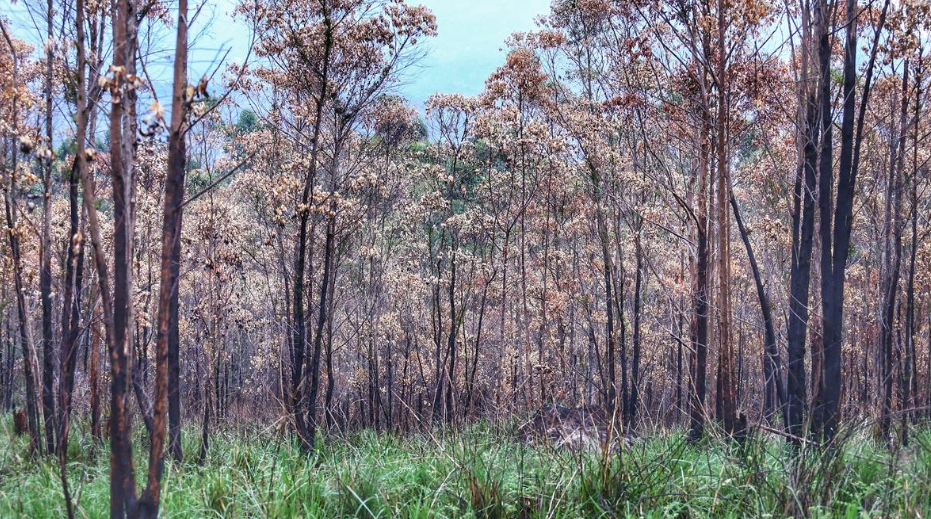Can green credits benefit India’s forests? (GS Paper 3, Environment & Ecology)

Context
- The Green Credit Programme, announced by the Environment Ministry in October 2023, is a market-based mechanism where individuals and companies can claim incentives called ‘green credits’ for contributions to environmental and ecological restoration.
About
- The Green Credit Scheme is a voluntary program initiated by the government. It incentivizes individuals and entities for their positive contributions to the environment.
- Green Credits are units of incentives. These are provided to participants engaged in activities that have a positive impact on the environment.
- This scheme is part of the broader 'LiFE' campaign (Lifestyle for Environment). It promotes and rewards voluntary environmentally-positive actions.
Activities Covered Under Green Credit Programme
- The Green Credit Programme encompasses eight key types of activities aimed at enhancing environmental sustainability. These activities include:
- Tree Plantation: Planting trees to increase green cover and combat deforestation.
- Water Management: Implementing strategies to efficiently manage and conserve water resources.
- Sustainable Agriculture: Promoting eco-friendly and sustainable agricultural practices.
- Waste Management: Implementing effective waste management systems to reduce environmental pollution.
- Air Pollution Reduction: Initiatives aimed at reducing air pollution and improving air quality.
- Mangrove Conservation and Restoration: Protecting and restoring mangrove ecosystems for ecological balance.
How will the Green Credit System work?
- The Green Credit System will be administered by the Indian Council of Forestry Research and Education (ICFRE), which will develop guidelines, processes and procedures for the implementation of the programme.
- The ICFRE will also establish thresholds and benchmarks for each Green Credit activity based on scientific criteria and best practices.
- The participants of the Green Credit System will have to register themselves with the ICFRE and submit their proposals for generating or buying Green Credits.
- The ICFRE will evaluate the proposals and approve them if they meet the eligibility criteria. The ICFRE will also monitor and verify the implementation of the approved proposals and issue Green Credits accordingly.
- The participants will be able to trade their Green Credits on a domestic market platform that will be developed by the ICFRE in collaboration with other stakeholders.
- The platform will facilitate transparent and efficient transactions of Green Credits among buyers and sellers.
- The program establishes a Green Credit Registry and a trading platform and provide information on the supply and demand of Green Credits.
Challenges Related to Green Credit Programme
- The process of verifying and validating environmentally-positive actions can be complex and time-consuming. This poses administrative burdens on participants and regulatory bodies.
- There is a risk that some participants may engage in "greenwashing." They falsely claim environmental benefits without actually implementing sustainable practices.
- Limited awareness and participation among individuals and entities may hinder the effective implementation.
- Lack of financial resources and incentives for participants to engage in environmentally-friendly activities can pose challenges to the success of the program.
- Serious doubts are also raised regarding who should be in charge of reducing pollution and conserving biodiversity, as well as how rigorous monitoring would be maintained.
- The Green Credit System may impose some costs on entities that participate in it.
Suggestions
- While challenges exist, the focus on methodologies, demand, and continuous evaluation will pave the way for a sustainable and impactful green credit market, contributing to India's commitment to environmental sustainability.
- The Green Credit System has to be carefully evaluated before being put into practice, especially given its emphasis on afforestation and tree planting.
- Unresolved issues with forest ownership and governance, problems with biodiversity and the environment, and global criticisms of carbon credit programmes should all be taken into account.
Conclusion
- The Green Credits Programme emerges as a visionary approach to incentivize environmental stewardship through a market-based model.
- By offering incentives for a diverse range of beneficial actions, the program seeks to drive holistic environmental improvements while ensuring rigorous standards.


